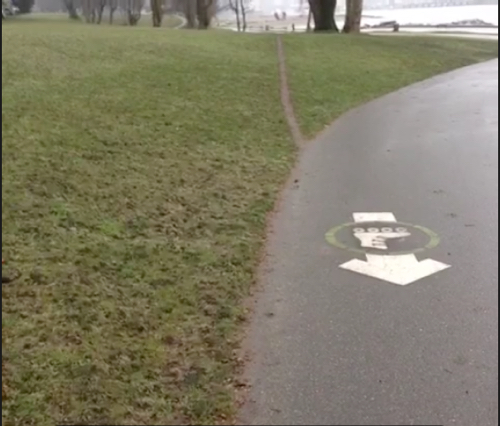Desire lines
“Desire lines” is a term coined by the French Philosopher Gaston Bachelard, which refers to “ the psychological, physical need to get from one place to the next”.
While paths are carefully designed by landscape architects in public spaces, often the lived experiences of the folks that use these spaces take over and create their own paths.
The interesting thing about “desire lines” is how they speak to the intelligence of the real life experiences of people who use those spaces. Paths are documents of a complex human behaviour that is etched on the landscape. Trails and paths are the expression of a collective attempt to get to a destination in the fastest and safest manner. Before we had armies of civil engineers laying out roads and sidewalks there were paths.
Interestingly paths are protected in English common law by a “right of way easement” which protects the use of common and private land for transportation purposes. Wikipedia
From an urban design perspective paths and desire lines can be a very good guide to where folks want to move. But also these paths represent a stubborn will to use a space in a certain way and to change this pattern of use can be costly and futile.


Designers – and especially landscape architects – love curves. When the draw paths they use curves, because they look so pretty on the paper or screen.
When people want to get somewhere, they use the most direct route they can. Most “desire lines” are straight lines. Far too often the built environment imposes unnecessary complexity and detours on the unfortunate. Those who have to walk. We still see those in cars as somehow deserving of a better infrastructure than those on foot or bicycle. Those confined to wheelchairs are mostly ignored.
Oddly, the wisdom needed to make human powered movement effective and efficient has been known for millennia. Motor vehicles are a relatively recent innovation, and not for the better, for the most part. Note how pejorative the expressions used for pedestrians are “Jaywalker” “short cut”
We must continually fight for places to be made for people first. They must allow for direct, convenient connections on the surface, and vehicles must be made to wait to proceed. If that’s a “war on cars” then bring it on.